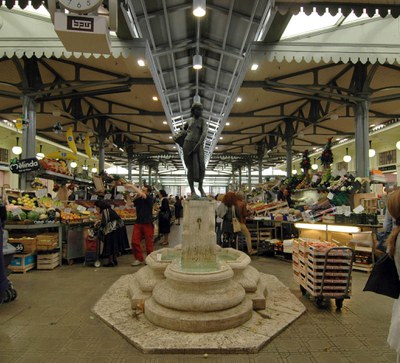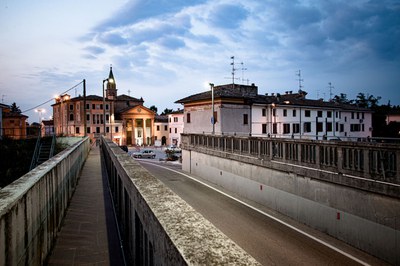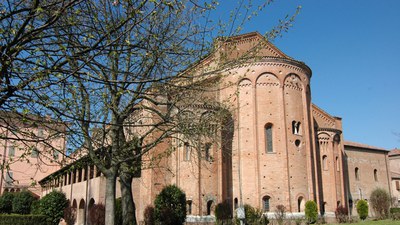History and the Taste of Tradition
The interior of Modena Province is of enormous historical and cultural interest and is also the home turf of wine and food specialties known the world over. For an excursion that will excite the appetite (for good food as well as for culture and history), it’s the perfect destination. The tips that follow guide visitors through the interior of Modena Province with delicious and intriguing stops along the way!
Day 1 - morning
The Modena Cathedral is an outstanding example of Romanesque art and is known the world over. Its audacious architecture has amazed visitors for centuries. The Cathedral was designed by the great architect, artist, and builder Lanfranco, who incorporated the artistry of another outstanding master, the sculptor Wiligelmo and the first stone in the construction of the Cathedral was laid on June 9, 1099.
A few steps from Modena Cathedral, almost directly in front of the Porta della Pescheria (the Fish Market Gate), are the Museums of the Cathedral, and we suggest paying them a visit to round out your experience.
Your journey among the artistic splendors of Modena’s UNESCO World Heritage Site continues with a visit to the fascinating Ghirlandina Tower, beloved by Modena’s citizens and the undisputed symbol of the city. It offers a breathtaking 360° view of the city as well as a special perspective on Piazza Grande below, the city’s eternal heart.
An high point in Piazza Grande is the Preda Ringadora (the “Haranguing Stone”) across from the stairway at the entrance to the Palazzo Comunale, and La Bonissima, the statue of a female figure installed at one corner of the building.
Finish up the day with a visit to the Palazzo Comunale, which serves today as Modena’s city hall just as it did during the Middle Ages. The beautiful and historic rooms inside are open to visitors-
When lunchtime rolls around, you’ll have nothing but choice when it comes to finding a place to enjoy a tasty time-out. Modena’s historic district is full of options, both traditional and not, where you can enjoy a refreshing pause. Very near the Cathedral, for example, is the Albinelli Market, the historic marketplace for Modena’s residents and a sight not to be missed. Find something to enjoy at one of the market’s many food stalls, and take a seat at a table to take in the bustling street scene.

Itinerary
Day 1 - afternoon
MuSa is located in the historic headquarters of the Villani firm (est. 1886), the oldest producer of salami and other cured and processed meats in Emilia-Romagna.
Alternatively, you can visit a local ham factory where Prosciutto di Modena DOP is produced, with a sweet and intense aroma and a savory but not salty flavor, Prosciutto in the south of Modena province mainly.
The last destination of this rich afternoon should be a local vinegar factory to discover this fascinating world.

Itinerary
Day 2 - Carpi, Sorbara and Nonantola
Located throughout the Province, many factories, welcome visitors to watch master cheesemakers as they perform the ancient rituals of transforming milk into cheese. A tour of a Parmigiano-Reggiano factory is a great way to sample the inimitable aromas and flavors of this delightful specialty as well as to experience first-hand how one of Italy’s most important products is born.
The morning continues in Carpi, “the pearl of the Renaissance” and the ancient seigneury of the Pio family. One of Italy’s largest and most beautiful piazzas is located here: Piazza dei Martiri. The Cathedral of Saint Mary of the Assumption (Santa Maria Assunta) faces Piazza dei Martiri from the north, and the Portico Lungo, an arcade with fifty-two spectacular arches, runs along one edge of the piazza. Across from the arcade is the Palazzo dei Pio complex with a 17th-century clock tower at its center. The Teatro Comunale is next to the Palazzo dei Pio.
After a morning spent savoring the perfume of milk and cheese and taking in the magnificence of a noble palazzo, indulge in a delectable lunch that includes local specialty dishes. In addition to those already mentioned, you can find such other local products here as Emilia-Romagna PGI (protected geographical indication) pears, rice, squash, and mostarda fina (candied fruit in a mustard-flavored syrup) from Carpi. You’ll have no trouble finding a welcoming place to enjoy your meal.
From Carpi we move on to the northern part of Modena Province (commonly called “Bassa” or “Lower” Modena because the area is largely below sea level) to learn how Lambrusco is made, the local sparkling wine known for its intense ruby-red color: the Lambrusco. Rather than talk about Lambrusco, though, we should talk about Lambruscos, plural. There are, in fact, four different varieties: Sorbara, Salamino di Santa Croce, Modena, and Grasparossa di Castelvetro.
The tour continues toward our final stop, Nonantola, for a visit to a second Romanesque-style complex of great significant: Nonantola Abbey
The Benedictine monk Anselm, brother-in-law of the Lombard King Astolfo, founded the Abbey in 752. Anselm brought his monks here to establish a monastery, and the Abbey was later dedicated to Pope St. Sylvester I (San Silvestro).
Next to the cathedral is the Palace of the Abbey, which houses the Abbey’s Archive and Library and the Benedictine and Diocesan Museum of Sacred Art.

Itinerary
That’s the end of this itinerary, but it’s not the end of the marvelous experiences that await you in Modena. We’re standing by with any advice or help you need to get the most out of your time in Modena, so don’t hesitate to contact us. We’re here to help.
















